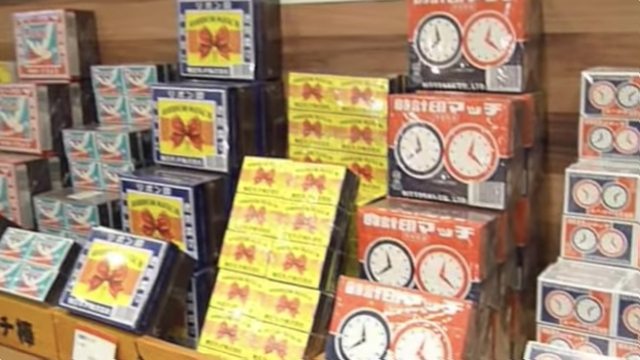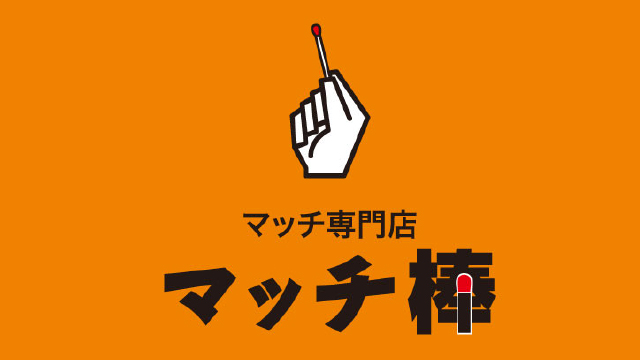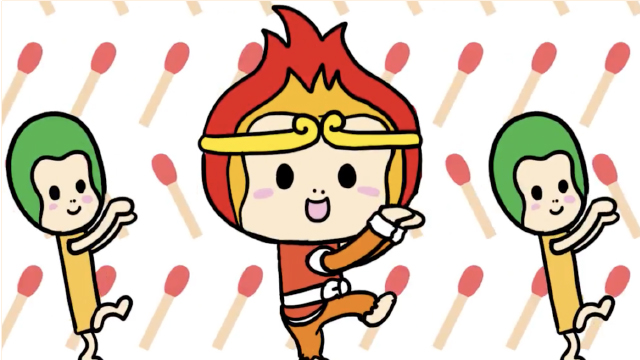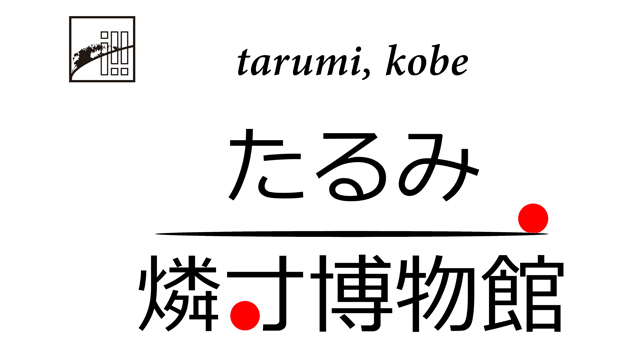Chat About Matches
HOME > Virtual Museum > Chat About Matches > Collectors’ Pastime
- GuestShinobu Machida
- HostsYutaka Kato(Match label collector/graphic designer)

Culture sage, who has written several books about public baths, and collects labels of natto (food made of soy beans), matches, Seirogan (popular stomach medicine in Japan) as well as wrapping papers and gift boxes. He has been studying downtown culture through people’s trend, fashions, craze, and tendencies by items he collects. He started to collect packaging materials from when he was an elementary school boy. The labels of chocolate and natto wrapping papers he has collected are more than 2000 pieces. His books are “Encyclopedia of Advertisement during the War” published by WEVE Co., and “Natto Data Bank” published by Shogakukan.
Machida Shinobu’s Museum:http://www.edo.net/machida/index.html
 Kato
KatoWe were coincidentally born in the same year, 1950 (Showa 25)
Yea, we were. (Smile)
 Machida
Machida Kato
Kato
Showa’s 30’s and 40′ (1955 – 1970) were time when Beatles was very popular in the world and we were young and blooming. I think you and me have such happy memories in common. And the match was necessity in our life those days. Match labels have attracted boys like you and I, as we are the type of person who has interest in pictures and drawings, right?
Yes, you are right. I started to have interest in match labels when I was playing with menko (toy cards, with which boys competed wind power and designs.) Designs of match labels and pictures on menko are somehow duplicated in my imagination. I receive almost same inspiration from both items.
 Machida
Machida Kato
Kato
Yes, I understand what you mean. Menko was also a necessary item for us. But, when did you start collecting?
The time I started intentionally buying matches was when I was a freshman. In those days, information was not quite available yet, so I didn’t even know if any other people were collecting matches like me. I collected them only because I liked it and it was my hobby. I came to know much later that some other people were also collecting matches. (Laugh)
 Machida
Machida Kato
Kato
Well, what made you conscious of matches as collection item, rather than daily-use item? I mean what was the turning point for you to start buying matches to collect?
The peak of my collection was the beginning of Showa 40’s (1965). That was the period when Japanese business was growing at a rapid rate, and values of things looked varying largely, besides typical Japanese commodities that had been used for some time were disappearing very fast. Therefore I thought I should catch them before they would disappear completely, so I started to buy them voluntarily. It was the time when things in Japan changed swiftly and largely in a short period. Do you think Japan absolutely changed within a few years from beginning of Showa 30′ (1955) to the end of Olympic game?
 Machida
Machida Kato
Kato
Yes, I think so, too. It was like the world of hand-made had gone and the industrially modernized world emerged. Talking about matches from industrial aspects, the highest production was in Showa 40’s (around 1965 – 1970). Until the end of Showa 30’s (1955 – 1960), matchboxes were made of wood, namely they were wooden boxes. Then in Showa 40′, they were made of corrugated paper, I mean paper boxes replaced wooden boxes to contain matchsticks. Thanks to the change of material, the efficiency of match production was improved a lot, and they were manufactured on mass production. However, for me, it was a little sad seeing something essential of woodcraft was replaced by other thing of unfamiliar efficiency. But, at the same time, there was a good phase for me in such transforming period, because I was able to make comparison of things: I compared to see which was better, old one or new one. Thinking back the time, I feel grateful that I spent my youth in such a significant era. Literally speaking, speedy transformation we experienced was kind of dizzy and stimulating, and in a way, it produced an ambivalent sensation in me. I started to collect matches because there was an inclination of evaluating things made in American culture or by American design be modern and good, when American culture surged over the Japanese shore in 1960’s, and traditional things in Japan seemed to be denied. It was almost the same craze of cultural blossom right after the commencement of Meiji Era. I spent days with my feeling somewhat between uncomfortableness and suspicion toward new things. Under such circumstances, Mr. Tadanori Yokoo and Genpei Akasegawa actively revealed their works: the works which were characterized by Japanese authentic coloring and designs and they drew great attention. Frankly speaking it was the incident that helped me to recover self-assurance and positiveness, as I considered, “Yes, I am right after all. My senses have been functioning OK.” At the same time, I was stunned by the designs on match labels these two artists created. I screamed, “This is it!” I thought the designs symbolized the anti-modernization. I was in university at that time, and those two designs on match labels motivated me to start a periodic exchanging meeting of match labels with my friends.
The motivation of collecting matches looks the same with that of collection of insects. For instance, collector analyzes whether there is any subtle difference between two similar pieces, and he is happy if he can precisely determine the difference. (Laugh)
 Machida
Machida Kato
Kato
Yes, that’s right. (Laugh)
When I was in elementary school, I collected insects for study of entomology, as I needed to do scientific learning during summer holiday. And I collected only cockroaches and flies, because I wanted to do something different from others to outstand in my class. Then my classmates didn’t like it at all (laugh), but the teacher praised my study of entomology. And I, as a small boy, realized, “There is such a thing like this,” which was the opportunity I became interested in things that common people were not concerned.
 Machida
Machida Kato
Kato
You met a good advocate for your study, and the teacher ignited your collecting passion. Mr. Machida’s collection originates in entomology! (Smile)
Yea. I like to analyze the items I have collected and see how the similar designs are differently characterized. I collect not only matches, but also other things such as packages of roasted chestnuts, juice and beer cans, and paper bags of chopsticks, etc. and I enjoy placing similar things side by side on my desk to discover small differences among them. Collection is the entomological study for me yet. (Smile)
 Machida
Machida Kato
Kato
Yes, I understand you. (Smile) Without your consciousness of entomological study, those packages and wrapping papers you have been collecting must go to trashcans. Looking at them and considering they are genuinely printed items, I think some are quite elaborate so I want to keep them, though I understand they were apparently made in the period when printing technology was not advanced yet. Those designs are more like calligraphic art of drawing. And I think I am attracted to the delicacy of the drawing. So I am as well interested in other items as matches with almost same sensitivity, but I also realize that they (other items) need to be more organized under systematic exposition of topics. In this sense, you surprised me, Mr. Machida. (Smile) Because I don’t think I can systematically organize so many things like you even spending whole life. (Laugh)
I feel pressures if I leave collected items unorganized, so I definitely need to arrange them orderly. I know you are the match-collection authority, and I want to neaten other items (except matches) to pass them to our descendants: otherwise, are there any chances for them to remain in this world?
 Machida
Machida Kato
Kato
“Working on a thing continuously will make great power of the thing.” Suppose other people say, “Hey, you’re wasting your time,” since it seems so useless to them, but if we still pursue it, I’m sure it will make enormous assets. The capacity we need for collection is “interest,” isn’t it? If other person says, “Do this, as this is your work,” I’ll never be able to do it unless I am interested in it.
No, we can’t do it. Definitely not
 Machida
Machida Kato
Kato
By the way, I once collected boxes of “Marble Chocolate,” too, but the collection didn’t last long. You are not collecting packages of any candies, are you? They have been produced endlessly.
Talking about candies, I’ve been collecting packages of chocolate. When I was in university, I wrote a thesis with topic of “Chocolate Package.” I asked the university to return the thesis, and they did. I’m glad I have it now. (Smile) Having collected numerous packages, I now can see the variation. And the variation extends almost infinitely.
 Machida
Machida Kato
Kato
Yes, I think so, too. Observance of items guides me to find their dissimilarity, and I am urged to look for the reason; why? Why are they different? And examining the history, I encounter serendipity of the reason or find that my assumption was after all correct, etc. And it is a lot of fun.
I think the act of examining the history leads me to the world of “Wabi and Sabi” (more sophisticatedly matured condition). The items we have been collecting are “valueless” for ordinary people. What I mean is that our collection has no market value. But the collection is treasure to me. Frankly speaking, I am not interested in items that are marketable, or in things many people have been concerned to possess. I like the things of the world where nobody has tramped, and want to collect them to study their various versions. I like to listen to elder people or to craftsmen in the field for explanations or for old stories. Those moments are blissful to me. When we were young, I talked and laughed with my friends saying, “We are aristocrats as long as our life is concerned with spiritual world.” I think the world we meant is “Wabi and Sabi World.” It is the tea ceremony’s world. (Smile) Talking about tea-ceremony, it is actually arcane. It seems ridiculous that we have to do so many steps for drinking a cup of tea. But only a few people realize that it is the highly intellectual game.
 Machida
Machida Kato
Kato
I agree with you. We are collectors who collect valueless items (grin) and only particular people are doing it: therefore information and data about these things are scarce. Then we have to depend on our own discoveries and studies. Good thing is that I can show my knowledge with confidence because it is what I have acquired through my own experience. I feel also beneficial that I can investigate uncertain things to my satisfaction; therefore my knowledge is further deepened. I think our laborious efforts for collection in lengthy time will become compiled reference in the related fields, then our accomplishment will be highly valuable. Originally I didn’t start collecting things for money. My hobby of collection has been straightforwardly satisfying my mind. Yea, I know for doing such a thing, curiosity and spiritual eagerness are necessary simultaneously. (Grin)
Yes, spiritual eagerness and affordable life patterns are requisite. If I wanted to be a rich man, then I probably had chosen different career. (Laugh)
 Machida
Machida Kato
Kato
he significance of collection is to be in annulled competence.
Definitely.
 Machida
Machida



